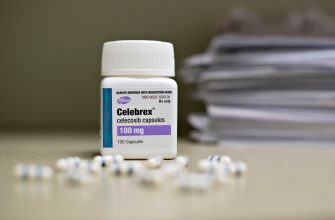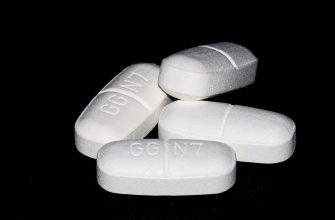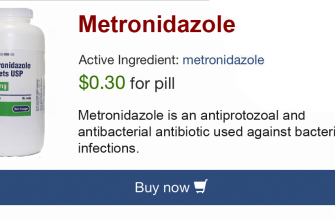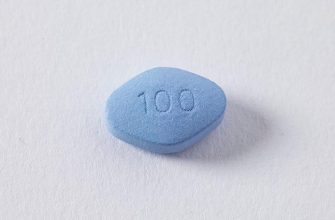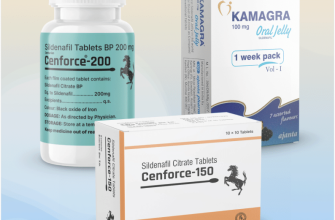When prescribing prednisone, healthcare providers often tailor dosages to fit individual needs based on the condition being treated and the patient’s response. For arthritis management, a common starting dosage might be 5 to 10 mg daily, adjusting gradually to achieve optimal relief while monitoring for side effects.
In cases of severe respiratory issues like asthma exacerbations, a provider might recommend a higher initial dose, such as 20 to 40 mg daily, tapering down as symptoms improve. This quick response can help restore lung function and reduce inflammation effectively.
Patients undergoing chemotherapy may receive 10 to 20 mg to mitigate side effects. This prescription can play a significant role in enhancing overall comfort by managing nausea and inflammation associated with treatment.
Dosage adjustments may occur based on therapeutic response and potential side effects. Regular follow-ups ensure that the prescribed regimen remains appropriate for the patient’s evolving health status.
- Examples of Prednisone Prescriptions
- Prednisone for Allergic Reactions
- Dosage and Administration
- Side Effects and Monitoring
- Prednisone Dosage for Asthma Management
- Chronic Asthma Treatment
- Tapering Off Dosage
- Usage of Prednisone in Autoimmune Disorders
- Dosage and Administration
- Monitoring and Side Effects
- Prednisone in the Treatment of Inflammatory Bowel Disease
- Prescribing Prednisone for Chronic Kidney Disease
- Prednisone for Skin Conditions: A Case Study
- Follow-Up Treatment Plan
- Patient Education
- Prednisone Protocols for Post-Surgical Recovery
- Utilizing Prednisone for Respiratory Infections
- Recommended Dosage and Administration
- Potential Side Effects and Monitoring
- Long-term Prednisone Treatment Guidelines
- Dosing Recommendations
- Side Effects Management
Examples of Prednisone Prescriptions
When prescribing prednisone, the dosage and duration can vary significantly based on the condition being treated. Here are specific examples:
-
Rheumatoid Arthritis:
Typically, a starting dose of 5 to 10 mg daily is recommended. Tapering down doses may occur over weeks as symptoms improve.
-
Asthma Exacerbation:
For acute issues, a common regimen is 40 to 60 mg per day for a week, followed by a gradual taper.
-
Allergic Reactions:
In cases of severe allergies or anaphylaxis, doses often range from 30 to 60 mg taken once daily for 3 to 10 days.
-
Skin Conditions (like Eczema or Psoriasis):
A starting dose of 20 to 40 mg daily may be prescribed, tapering based on the response observed.
-
Autoimmune Disorders (Lupus):
Initial doses may vary widely from 10 to 60 mg depending on severity, often requiring gradual adjustments.
Monitoring for potential side effects is critical. Common side effects include weight gain, mood changes, and increased blood sugar levels. Regular follow-ups are advised to manage these risks effectively.
Adjustments in dosage should always be made under medical supervision, especially when transitioning from a higher to a lower dose to mitigate withdrawal symptoms.
Prednisone for Allergic Reactions
Prescribe prednisone for moderate to severe allergic reactions, especially when symptoms impact breathing, swallowing, or overall quality of life. Start with a dosage tailored to individual needs, commonly ranging from 20 mg to 60 mg daily, depending on the severity and type of reaction.
Dosage and Administration
Administer prednisone in divided doses for the first few days, gradually tapering as symptoms improve. For acute allergic responses, a short burst of high-dose therapy often suffices.
| Severity of Reaction | Recommended Dosage | Duration |
|---|---|---|
| Mild | 20 mg daily | 5-7 days |
| Moderate | 40 mg daily | 5-10 days |
| Severe | 60 mg daily | 3-5 days |
Side Effects and Monitoring
Monitor for common side effects, including increased appetite, weight gain, and insomnia. Long-term use requires careful evaluation to prevent complications such as hypertension and glucose intolerance.
Always assess for contraindications, such as fungal infections or severe hypertension, before prescribing. Educate patients on the importance of adhering to the prescribed regimen and not abruptly discontinuing the medication.
Prednisone Dosage for Asthma Management
For acute asthma exacerbations, prednisone is often prescribed at a dosage of 40 to 60 mg per day for 5 to 7 days. Medical professionals usually recommend taking the full dose in the morning to mimic the body’s natural cortisol rhythm and minimize side effects.
Chronic Asthma Treatment
In chronic asthma management, lower doses ranging from 5 to 20 mg per day might be appropriate. Physicians tailor the dosage based on individual response and the presence of asthma symptoms. Monitoring the patient’s condition closely helps ensure the efficacy of the treatment while minimizing potential side effects.
Tapering Off Dosage
After a course of high-dose prednisone, gradually tapering the dosage is often necessary. A typical tapering schedule might reduce the dose by 2.5 to 5 mg every few days. This approach helps prevent adrenal insufficiency and supports a smoother transition off glucocorticoids.
Always follow the healthcare provider’s specific dosage recommendations and schedule for optimal asthma management. Regular follow-ups ensure adjustments can be made based on the patient’s current health status and asthma control level.
Usage of Prednisone in Autoimmune Disorders
Prednisone often plays a significant role in managing autoimmune disorders. This corticosteroid effectively reduces inflammation and suppresses the immune response, making it beneficial for conditions such as lupus, rheumatoid arthritis, and multiple sclerosis.
Dosage and Administration
The typical starting dosage of prednisone varies based on the specific disorder and individual patient response. For example, a common regimen for rheumatoid arthritis may start at 5-10 mg daily, with adjustments made based on symptoms and inflammatory markers. Regular monitoring is crucial to determine efficacy and side effects, enabling tailored dosages that align with treatment goals.
Monitoring and Side Effects
While prednisone can bring relief, monitoring for side effects is essential. Patients can experience weight gain, hypertension, and mood changes. Bone density loss also poses a risk, especially with long-term use. Supplementing with calcium and vitamin D, along with regular exercise, helps mitigate these risks. Engaging with healthcare providers to create a balanced approach enhances the benefits while managing drawbacks.
Prednisone in the Treatment of Inflammatory Bowel Disease
Prednisone is commonly prescribed for managing inflammation in inflammatory bowel disease (IBD), including Crohn’s disease and ulcerative colitis. A typical starting dosage is 40-60 mg per day, adjusted based on the patient’s response. This medication helps reduce inflammation and symptoms like abdominal pain and diarrhea.
Monitoring is essential during treatment. Patients should have regular follow-ups to assess efficacy and watch for side effects, including weight gain, mood changes, and increased blood pressure. Adjustments may be necessary to find the optimal dose.
Typically, a tapering schedule follows the initial treatment phase. Gradually reducing the dose helps avoid withdrawal symptoms and minimizes potential side effects associated with long-term use. A common tapering approach is decreasing the dose by 5-10 mg every week or two, depending on individual progress.
Some patients benefit from using prednisone in combination with other medications. Integrating immunomodulators or biologics can enhance symptom control and minimize reliance on corticosteroids. Always discuss this strategy with a healthcare provider for personalized recommendations.
Encouraging patients to adopt lifestyle changes can complement medication. Ensuring a balanced diet, regular exercise, and stress management techniques enhances overall well-being and may improve treatment outcomes.
Stay informed about potential side effects and report any concerns to your healthcare team promptly. Awareness and proactive communication play a significant role in effective IBD management with prednisone.
Prescribing Prednisone for Chronic Kidney Disease
For patients with chronic kidney disease (CKD), consider prescribing prednisone to manage inflammation and immune responses. Start with a low dose, typically around 10-20 mg daily, to assess tolerance and response. Adjust the dosage based on the patient’s clinical situation and laboratory results.
Monitor renal function closely. Regularly assess serum creatinine and electrolytes, particularly potassium, as prednisone can influence these values. Maintain communication with the patient to detect any adverse effects early.
Indications for prednisone in CKD include:
- Active glomerulonephritis
- Autoimmune disorders affecting the kidneys
- Severe edema not responsive to diuretics
Avoid long-term use whenever possible due to potential side effects such as hypertension, diabetes, or further renal impairment. Consider tapering the dose after the initial inflammatory response subsides, usually within a few weeks.
Be aware of drug interactions, especially with medications commonly prescribed for CKD. Non-steroidal anti-inflammatory drugs (NSAIDs) may increase the risk of adverse renal effects when combined with prednisone.
Instruct patients on how to recognize signs of corticosteroid side effects, including mood changes, increased appetite, or signs of infection. Provide lifestyle advice to mitigate weight gain and manage blood sugar levels during therapy.
Engage in regular follow-up appointments for monitoring and patient education. Review the patient’s overall management plan, ensuring the use of prednisone complements other treatments for CKD.
Prednisone for Skin Conditions: A Case Study
In a clinical scenario involving a 32-year-old patient diagnosed with severe eczema, the dermatologist prescribed prednisone to manage inflammation. The dosage started at 40 mg daily for five days to provide rapid relief from symptoms such as redness, itching, and swelling. This short-term burst therapy effectively alleviated the patient’s discomfort.
Follow-Up Treatment Plan
After the initial prednisone course, the dermatologist recommended transitioning to topical corticosteroids for ongoing management. Bi-weekly follow-up appointments allowed the healthcare team to monitor the patient’s response and adjust the treatment as necessary. It was crucial to note any recurrence of symptoms and the patient’s adherence to the prescribed regimen.
| Day | Medication | Dosage | Symptoms |
|---|---|---|---|
| 1 | Prednisone | 40 mg | Severe itching, redness |
| 2 | Prednisone | 40 mg | Moderate improvement |
| 3 | Prednisone | 40 mg | Slight reduction in symptoms |
| 4 | Prednisone | 40 mg | Significant relief |
| 5 | Prednisone | 40 mg | Symptoms manageable |
| 6 | Topical Corticosteroids | As needed | Maintaining improvement |
Patient Education
Education played a key role in this case. The patient received guidance on potential side effects of prednisone, such as weight gain and mood changes, which could arise with longer use. Emphasis on proper skin care routines and the importance of avoiding known triggers for eczema supported the patient’s journey toward sustained skin health.
Prednisone Protocols for Post-Surgical Recovery
After surgery, practitioners often prescribe prednisone to reduce inflammation and promote healing. A common protocol involves administering 20 mg of prednisone daily for the first week post-operation. This initial dose helps to manage swelling and pain effectively.
As the recovery progresses, tapering is crucial. Gradually decrease the dosage by 5 mg every week after the first week, aiming for a maintenance dose of 5-10 mg per day by the end of the Month. This approach minimizes withdrawal symptoms while continuing to support recovery.
Monitor patients closely for side effects, particularly during the tapering phase. Encourage them to stay hydrated and maintain a balanced diet rich in proteins to aid tissue repair.
For surgeries with more significant tissue trauma, consider extending the initial 20 mg dose to two weeks before beginning the taper. Adjustments based on the individual’s response and progress are essential for optimal recovery.
Integrating physical therapy around the third week can complement prednisone’s anti-inflammatory effects, enhancing mobility and strength as the dose decreases. Regular follow-ups will help assess the effectiveness of the treatment plan and make necessary modifications.
Utilizing Prednisone for Respiratory Infections
Prednisone can be prescribed for respiratory infections characterized by significant inflammation, such as severe bronchitis or asthma exacerbations. This corticosteroid works by reducing inflammation in the airways, promoting easier breathing. Administering prednisone may be particularly beneficial when the patient’s breathing difficulty is severe or unresponsive to standard bronchodilator therapies.
Recommended Dosage and Administration
The typical dosage of prednisone for respiratory infections varies based on the individual’s condition and response to treatment. A common starting dose can range from 20 to 60 mg per day for adults, usually taken once daily or divided into two doses. It’s crucial to schedule the dose early in the day to align with the body’s natural cortisol rhythm, minimizing potential sleep disturbances.
After initiating treatment, monitor symptoms closely. If the patient shows signs of improvement within a few days, a gradual tapering of the dosage may be appropriate to prevent withdrawal symptoms. Always follow the physician’s guidance regarding the duration of therapy, which may extend from a few days to several weeks based on clinical response.
Potential Side Effects and Monitoring
Be aware of possible side effects such as elevated blood sugar levels, gastrointestinal issues, and mood swings. Routine follow-ups are essential to monitor the patient’s response and adjust the treatment plan as necessary. Advise patients to report any unusual symptoms promptly, and consider co-prescribing medications to mitigate side effects, such as a proton pump inhibitor to protect the stomach lining.
By judiciously utilizing prednisone, healthcare providers can effectively manage inflammation in patients with respiratory infections, improving overall respiratory function and quality of life.
Long-term Prednisone Treatment Guidelines
Monitor the patient regularly for side effects, including weight gain, mood changes, and increased blood pressure. Carefully assess the necessity of continuation versus the risk of complications.
Dosing Recommendations
- Begin with the lowest effective dose.
- Gradually taper the dosage to find the minimal effective level.
- Avoid sudden discontinuation to prevent withdrawal symptoms.
Side Effects Management
- Encourage a balanced diet to mitigate weight gain.
- Suggest regular physical activity to support cardiovascular health.
- Monitor blood glucose levels, especially in diabetic patients.
- Prescribe calcium and vitamin D supplements to prevent osteoporosis.
Educate patients about potential side effects. Discuss the importance of adhering to the treatment plan and attending follow-up appointments.
Consider periodic bone density screenings for long-term users. Adjust the treatment protocol based on the patient’s overall health status and reactions to the drug.


